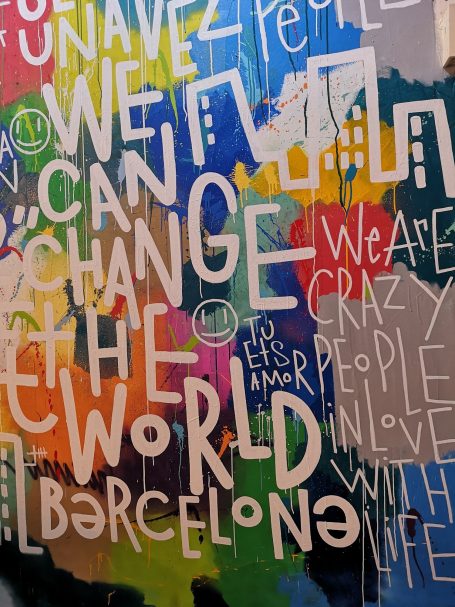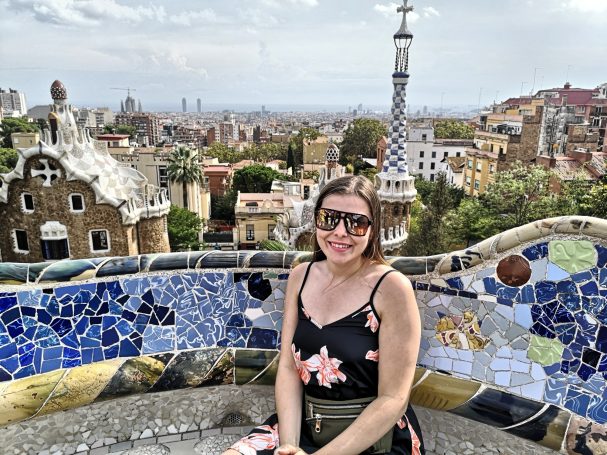cruise port: barcelona, spain
As your cruise ship glides into the bustling Port de Barcelona, prepare to be captivated by one of the Mediterranean's most vibrant and culturally rich cities. Barcelona, a stunning fusion of Gothic grandeur and Gaudí's whimsical Modernisme, offers an unforgettable experience even on a single day ashore.
My comprehensive Barcelona Cruise Port Guide is your essential resource for making the most of your visit. Get ready to explore Barcelona with confidence and maximise every precious moment in this captivating Catalan capital!
know before you go
Barcelona Cruise Port (Port de Barcelona)
port location (inc. terminal information)
- The Port de Barcelona is one of Europe's busiest cruise ports. It's located southwest of the city centre.
- Adossat Pier (Terminals A, B, C, D, E): These are the furthest from the city centre and handle the majority of large cruise ships.
- World Trade Centre Pier (North, South, East Terminals): These are closer to the city centre and primarily handle smaller ships or turnaround operations.
- Your specific terminal will determine the best immediate transport option. Check your cruise documents for terminal information.
accessibility @ port de barcelona
Cruise Port Terminals: All Barcelona cruise terminals, including the main Moll Adossat pier (where 85% of ships dock), are fully wheelchair accessible. They feature step-free access, ramps, elevators, widened doors, and accessible restrooms to ensure a smooth embarkation and disembarkation process.
getting from the port to the city centre
cruise port shuttle bus (portbus - blue bus)
This is the most common and convenient option for passengers from the Adossat terminals.
- Route: It runs a continuous loop between the Adossat terminals and the Christopher Columbus Monument (Portal de la Pau/World Trade Centre area) at the bottom of La Rambla.
- Cost: Approximately €3 for a single ticket, €4.50 for a round-trip ticket (prices can change, check current rates). You usually buy tickets on the bus.
- Frequency: Runs frequently when ships are in port.
- Benefits: Direct, easy, avoids taxi queues for short distances.
The dedicated shuttle bus service that connects the cruise terminals (especially Adossat Pier) to the Christopher Columbus Monument (at the foot of La Rambla) is wheelchair accessible and equipped with a hydraulic ramp. This is a recommended and affordable way to get from the port to the city center.
taxis
Readily available at all terminals.
- Cost: Expect to pay around €10-€20 for a ride to Plaza Catalunya or Sagrada Familia from Adossat Pier, depending on traffic and exact destination. Metered fares.
- Beware: Ensure the meter is running. Use official taxis (black and yellow).
walking
Not recommended from Adossat Pier to the city centre as it's a long walk (30-45 minutes) along a busy road, and there isn't a pedestrian pathway for much of it. If you arrive at the World Trade Center Pier, you can walk to the bottom of La Rambla in about 5-10 minutes.
public bus/metro
While there are public bus stops further from the terminals, the PortBus shuttle is generally the most straightforward way to connect to the public transport network from the Adossat Pier. Once at the Columbus Monument, you're near Drassanes Metro station (Green Line, L3).
Barcelona's metro network is largely accessible, with most main stations featuring elevators for disabled access. All public buses in the city are wheelchair accessible, providing ramps and designated spaces.
getting around the city
Barcelona boasts an excellent and user-friendly public transport system (TMB), making city exploration easy.
The Metro (subway) is efficient for longer distances; the Drassanes station (L3 Green Line) is conveniently located near the cruise port shuttle drop-off. Various ticket options are available, including single tickets, the cost-effective T-Casual (10 journeys, multi-person), T-Familiar (8 journeys, multi-person), and the Hola Barcelona Travel Card for unlimited rides. Always validate your ticket to avoid fines. Key metro lines connect to major attractions like Sagrada Familia (L5 Blue) and Gaudí's houses (L3 Green).
Buses and trams offer extensive coverage, while Hop-on Hop-off buses are ideal for cruise passengers seeking an efficient way to see highlights with audio commentary, often accessible from near the Columbus Monument. Finally, central areas like the Gothic Quarter, El Born, and La Rambla are best explored on foot due to their walkability.
helpful considerations
- Safety: Pickpocketing is prevalent in crowded tourist spots. Remain vigilant, secure valuables in front pockets or cross-body bags, and be wary of distraction scams.
- Language: Both Catalan and Spanish are official. English is common in tourist areas, but basic Spanish phrases are appreciated.
- Meal Times: Lunch is typically 1:30 PM - 3:30 PM, and dinner is usually 8:30 PM - 11:00 PM.
- Tipping: Similar to the UK, tipping isn't the norm; it's generally for exceptional service.
- General Advice: Stay hydrated, wear comfortable shoes, use only metered official taxis, and take breaks in quieter spots if needed.
barcelona neighbourhoods
- Barri Gòtic (Gothic Quarter): Ancient, atmospheric, and historic, this oldest part of the city features narrow medieval streets, hidden squares, the Barcelona Cathedral, and Roman ruins. (West of Via Laietana, towards La Rambla)
- El Born: A bohemian, trendy, and artistic historical area, home to Santa Maria del Mar Basilica, the Picasso Museum, and a vibrant dining and nightlife scene. (East of Via Laietana, between Gothic Quarter and Barceloneta)
- El Raval: Gritty, multicultural, and edgy, this district offers a more authentic glimpse into Barcelona life with contemporary art museums (MACBA, CCCB), independent boutiques, and diverse international restaurants. (West of La Rambla)
- L'Eixample: Elegant, grand, and architectural, this grid-patterned district showcases Modernist masterpieces like Sagrada Família, Casa Batlló, and La Pedrera, alongside high-end shopping and fine dining. (North of Plaça de Catalunya)
- Gràcia: Retaining a charming, village-like atmosphere, Gràcia is known for its picturesque squares, independent shops, and a strong local community, offering excellent restaurants and bars. (North of Eixample)
- Barceloneta: A lively, casual, and maritime neighbourhood famous for its urban beach, seafood restaurants, and relaxed seaside ambiance. (Peninsula, east of Port Vell)
- Poble Sec / Montjuïc: Poble Sec is an authentic, evolving neighbourhood known for affordable restaurants and pintxos. Montjuïc Hill offers panoramic views, Montjuïc Castle, the Magic Fountain, and cultural sites. (Southwest of city center)
- Sant Antoni: An up-and-coming, trendy, and local foodie destination, featuring the renovated Mercat de Sant Antoni, independent shops, and a growing number of excellent brunch and innovative restaurants. (West of El Raval, south of L'Eixample)
Last Updated: 24 July '25



